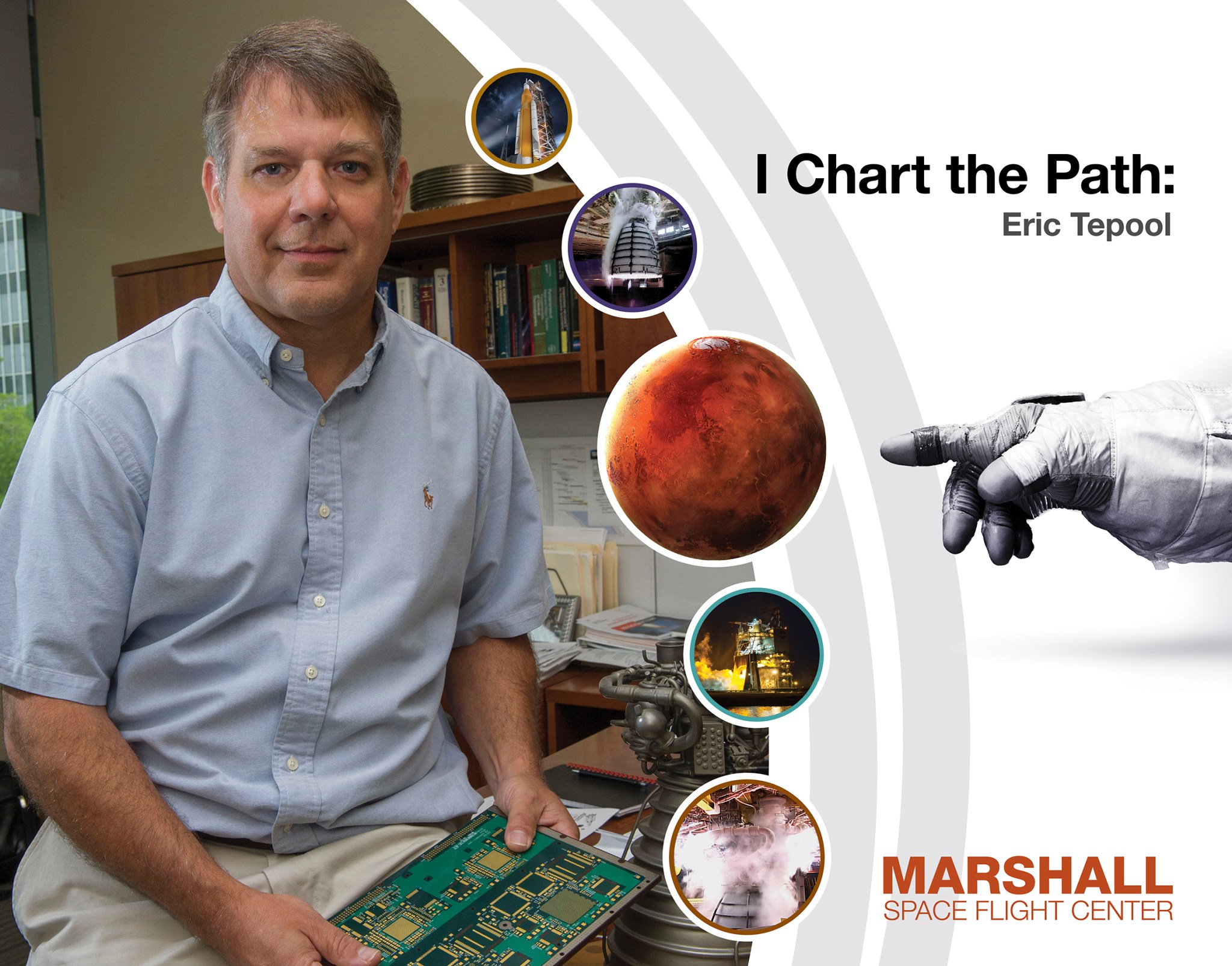The Space Launch System’s four RS-25 core stage engines will provide lift capability for the rocket to carry crew and cargo to deep space destinations on the journey to Mars. These engines have experience when it comes to making history and powered all 135 of NASA’s Space Shuttle missions as the Space Shuttle Main Engines before they began their SLS upgrade. Thanks to Eric Tepool and his team of engineers, they are now poised to take their place as the engines of the most powerful rocket in the world.
As chief engineer of the Liquid Engines Office at Marshall Space Flight Center, Tepool oversees the technical side of upgrading the RS-25 engines. He and his team are developing a new engine controller, or “brain,” for the engine, which monitors engine status and communicates between the rocket and the engine. In addition to the work on integrating a new controller, work is underway to restart the production line for RS-25 engines while incorporating the latest manufacturing technologies and material improvements to ensure a more affordable engine.
As a pioneer of new technologies, there are always fresh challenges to overcome. This is Tepool’s favorite part of being a chief engineer.
“You could be working a valve one week, a controller the next week and a turbo-pump the next week. You never know what the next challenge will be, and that makes it interesting.”
According to Tepool, “The biggest challenge is often convincing the team that it’s ok to change something. Most people — and I’m often one of them — believe ‘If it’s not broke, don’t fix it.’ But a lot of times, new requirements or advances in hardware, materials or processes force change.”
He explained that upgrading the engines is a balancing act between using proven technology and embracing new ideas. It is his job to recommend the best technical solution for the needs of the project. After a solution has been chosen, he keeps the project moving by focusing the talent of his team.
“We’ve got a lot of good engineers around here that are extremely knowledgeable in specific areas. I try to learn a little bit about everything so I can understand what they’re trying to convey to me. This knowledge helps me guide them from a more informed perspective,” explained Tepool.
In guiding his team of experts when faced with a new challenge, Tepool relies on knowledge he has gained through years of propulsion experience and points out that problem solving can be beneficial.
“Every time you deal with a challenge, your knowledge base gets that much deeper. All of our engineers get a little bit sharper, and gain a better understanding of what they’re going to fly. Working minor issues is a good thing because it makes you understand the product. If nothing ever happens to your product, you don’t really get a good understanding of it — you just know it works,” said Tepool.
Tepool’s love for the space program began at an early age. He was inspired by his father, NASA engineer Ron Tepool, who took him to see the Space Shuttle Enterprise return to Marshall atop a Boeing 747 when he was 13 years old.
Since then, Tepool has earned a degree in Mechanical Engineering from Auburn University and has worked on numerous development programs, which include the alternate high pressure turbopumps of the SSME, the Integrated Powerhead Demonstrator, and the J-2X engine.
Through his 26-year career at Marshall, Tepool is continuing NASA’s legacy of making history through innovation. “I am in the spot I always wanted to be in,” he said. “I mean, once you’re involved in engineering, what better place to work than at NASA?”
With help from the boosters, the RS-25 engines will launch the SLS rocket more than 100 miles above earth, reaching Mach 23, faster than 17,000 MPH in 8.5 minutes. In 2018, SLS and Orion will launch together for the first time, and be capable of sending humans farther into space than ever before.




























